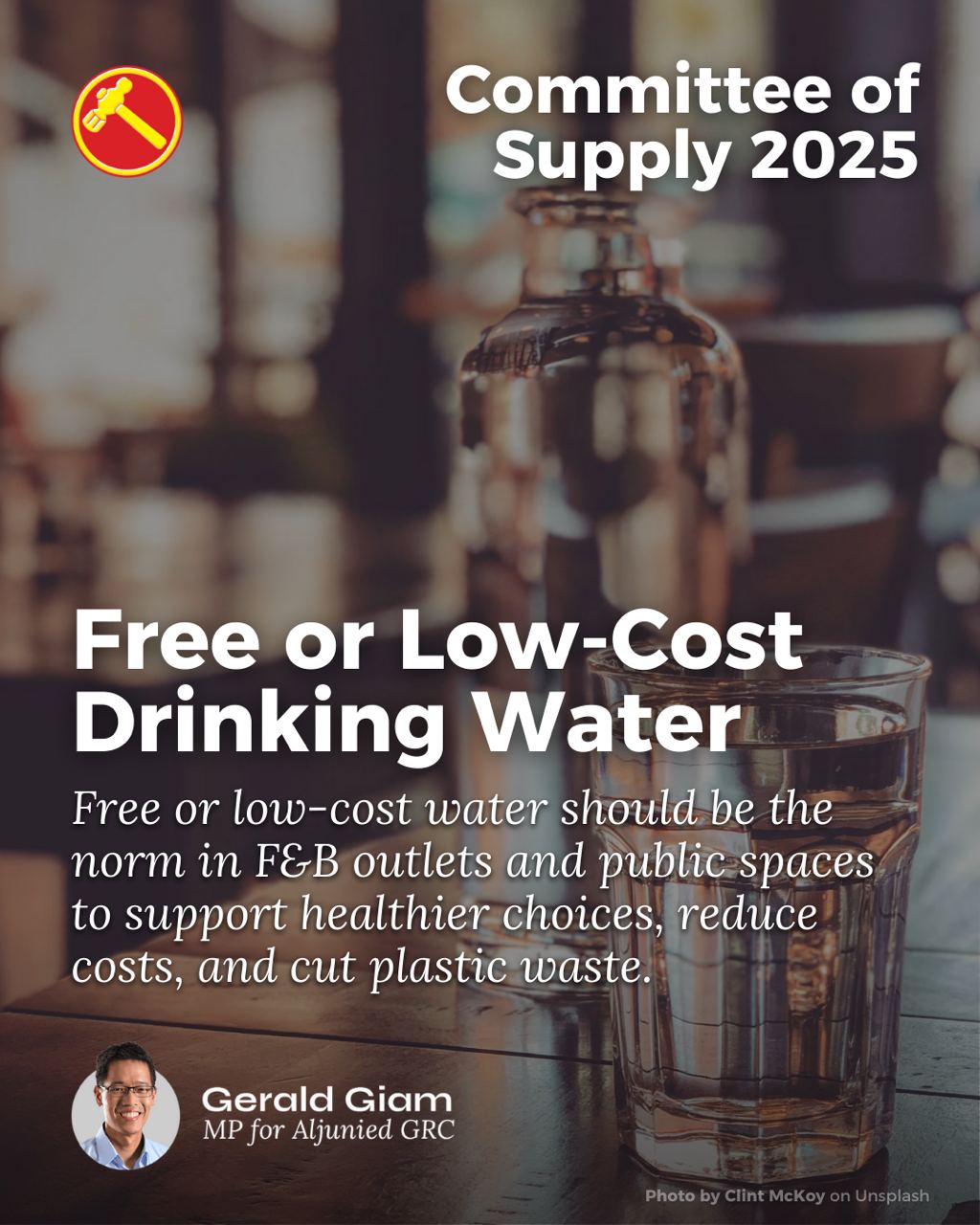Committee of Supply Debate 2025, Ministry of Sustainability and the Environment
4 March 2025
More restaurants now charge for plain water, and some price bottled water the same as sugary drinks. This nudges consumers towards sugar-laden beverages, increasing the risk of obesity and diabetes.
Free or low-cost drinking water should be made more widely available across F&B outlets, shopping malls, heartland coffeeshops and public spaces. This supports healthier choices and reduces unnecessary costs for consumers.
I urge MSE to encourage and work with F&B outlets, coffeeshops, and malls to provide free or low-cost drinking water as a best practice.
MSE should also promote a culture of carrying reusable water bottles as part of Singapore’s sustainability efforts. Refilling reusable bottles cuts down our reliance on single-use plastics.
By nudging businesses, building owners and the public towards these norms, we can help Singaporeans stay hydrated while making choices that benefit their health, their wallets, and the environment.
